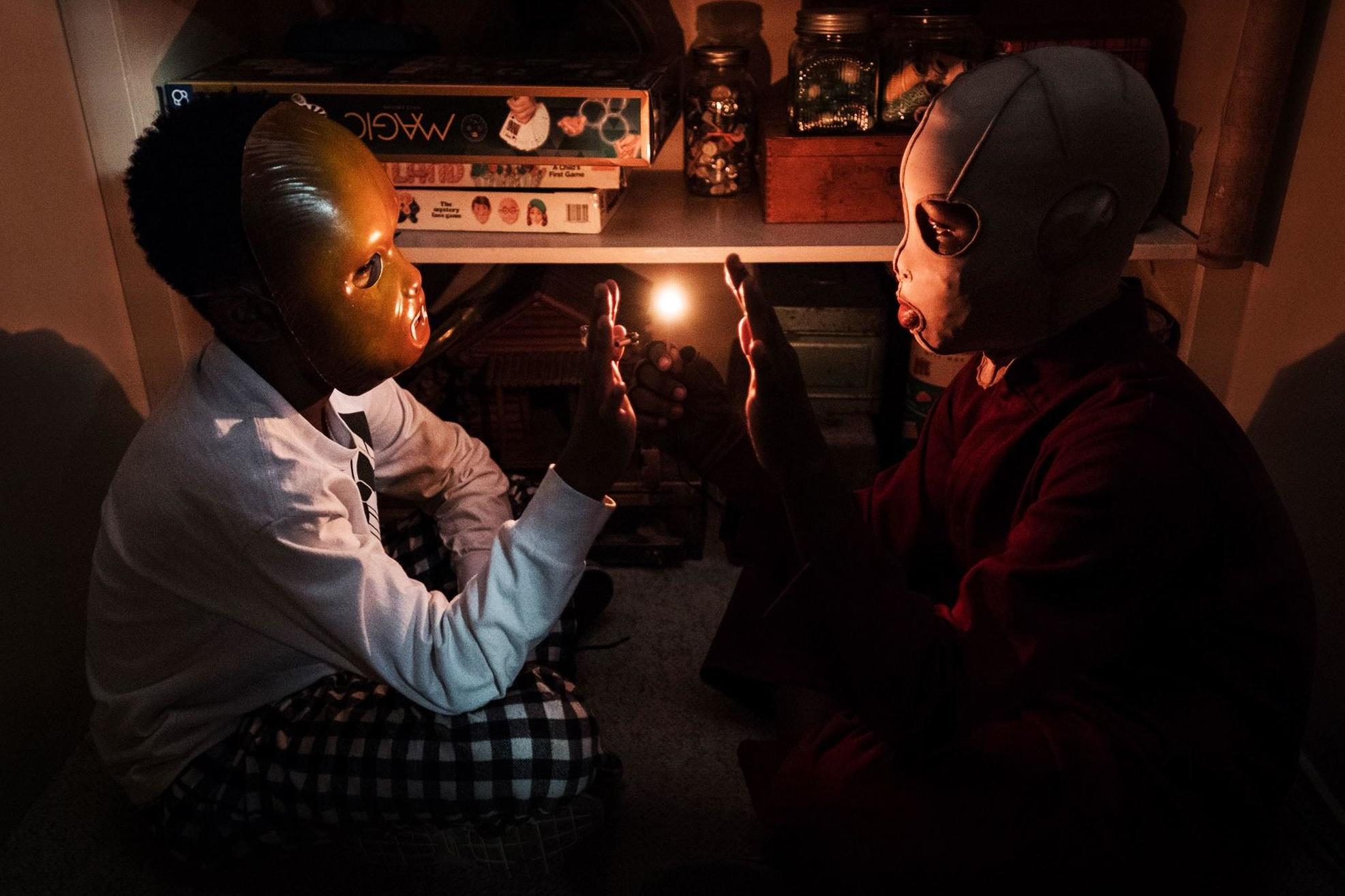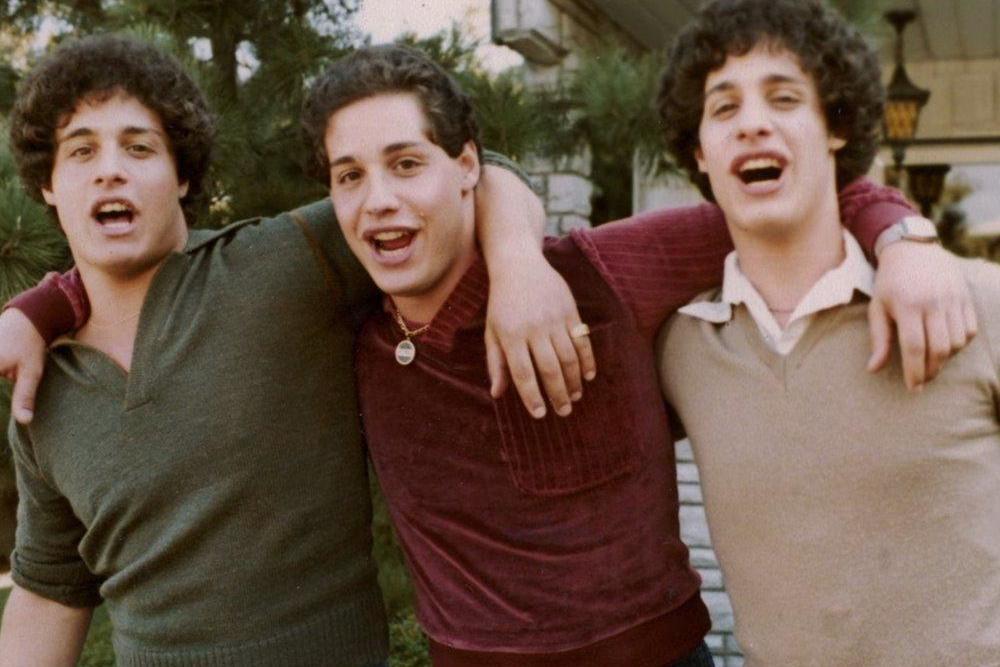From The Comedy of Errors to Us: What the doppelganger has meant to storytellers through the years
In folklore, to meet your own double was usually a portent of death, writes Anne Billson. But the doppelganger can also provide humour for farces such as ‘The Parent Trap’

Your support helps us to tell the story
From reproductive rights to climate change to Big Tech, The Independent is on the ground when the story is developing. Whether it's investigating the financials of Elon Musk's pro-Trump PAC or producing our latest documentary, 'The A Word', which shines a light on the American women fighting for reproductive rights, we know how important it is to parse out the facts from the messaging.
At such a critical moment in US history, we need reporters on the ground. Your donation allows us to keep sending journalists to speak to both sides of the story.
The Independent is trusted by Americans across the entire political spectrum. And unlike many other quality news outlets, we choose not to lock Americans out of our reporting and analysis with paywalls. We believe quality journalism should be available to everyone, paid for by those who can afford it.
Your support makes all the difference.We have met the enemy, and they are us. Or Us, to cite the title of Jordan Peele’s latest horror movie, in which Lupita Nyong’o and her family are stalked by their own doppelgangers. As one of the movie’s clever taglines has it, “Watch yourself”.
There can be few things more unnerving than coming face to face with yourself, or your self, either literally or metaphorically, or – as is so often the case in horror movies, bless them – both literally and metaphorically at the same time. Especially if, for example, it involves two Roger Moores for the price of one in The Man Who Haunted Himself, a film that shocked both critics and audiences in 1971 by demonstrating that the Saint-turned-Persuader and Man Who Would Shortly Be Bond could do more than smirk and raise an eyebrow. Au contraire, he was capable of giving a credible performance as a bowler-hatted London salaryman undergoing a full-on psychotic break in which his alter ego has no truck with traditional old-fashioned gentlemanly behaviour, but is the harbinger of a brash new dog-eat-dog world of corporate ruthlessness and selfish hedonism.
In folklore, to meet your own double was usually a portent of death. The Pre-Raphaelite artist Dante Gabriel Rossetti fixated on this theme, obsessively painting or drawing several different versions of the picture How They Met Themselves, in which (to quote Jorge Luis Borges, himself no stranger to the doppelganger theme) “two lovers come upon themselves in the dusky gloom of a wood”, a confrontation that is making one of the women – presumably the flesh and blood original – swoon in terror.
The modern equivalent would probably be meeting your own double and realising, like the characters in Invasion of the Body Snatchers or The Thing, that you’re halfway through an alien invasion and that you will shortly be supplanted by this extra-terrestrial who not only looks exactly like you, but whose acquisition of your memories and characteristics so accurately mirror your own that no one will be able to distinguish the copy from the original. If it’s that accurate a simulacrum, what does it matter anyway? And hey, maybe our alien stand-ins can sort out global warming while they’re at it.
For 18th- and 19th-century German Romantic poets, the doppelganger represented the discrepancy between the real and the ideal, a continuous striving for the infinite. But godfathers of Gothic fiction such as ETA Hoffmann and Edgar Allan Poe soon knocked that airy-fairy nonsense on the head and twisted it into something at once more sinister and more relatable, a symbol of mental disintegration, or of the evil id that gets to enact all those insidious desires we’re too repressed or cautious or civilised to unleash. The doppelganger in Poe’s short story William Wilson acts as Wilson’s conscience, thwarting his nefarious designs at every turn, but more usually, the doppelganger represents the dark side. The protagonist of 1913 German silent horror film The Student of Prague (itself a variation on Poe’s story, and remade several times) needs money to woo the posh lady he fancies; the devil provides it, and as payment steals the young man’s reflection, which takes on a life of its own and runs amok, leaving the unfortunate scholar having to cope with the fallout from his double’s misdeeds. Or, in today’s parlance: I’m sorry I sold my soul, but it wasn’t me who said those terrible things – it was the Xanax.
Doppelgangers can also provide humorous fodder, with Shakespeare’s The Comedy of Errors providing a blueprint for farces such as The Parent Trap or Big Business, in which twins are separated at birth and shenanigans ensue. Another favourite trope is the humble lookalike whose uncanny resemblance to a politician or celebrity thrusts him into a position of power; ur-texts here are Anthony Hope’s The Prisoner of Zenda and Mark Twain’s The Prince and the Pauper; the numerous screen adaptations of the latter include A Tale of Two Kitties, featuring the doppelganger of Garfield the cat. Following in the footsteps of Charlie Chaplin’s The Great Dictator, in which a Jewish barber swaps places with a Hitler-esque fascist, we have Dave (yes, any old schlemiel can step into Potus’s shoes), Moon Over Parador (that Latin American demagogue is really an actor) and Bowfinger (a doofus posing as a film star, or maybe the other way round), with Kagemusha (a petty thief posing as a dead Daimyo in civil war-torn Japan) putting the case for the occasional non-hilarious variation.
The doppelganger is also a recurring motif in psychological thrillers, exemplifying the obsessiveness of the subjective male gaze in films such as Vertigo, Obsession, Body Double or Lost Highway in which one babe is very much like another, just dye her hair and Bob’s your uncle. Or it’s a complicating factor in action or superhero movies, reminding you never to trust your own eyes when any one of these people could be – surprise! – X-Men’s Mystique or one of Captain Marvel’s Skrulls in shapeshifting disguise, or even Tom Cruise in one of his Mission: Impossible peel-off faces with accompanying pocket-size voice-altering technology.
Doppelgangers are everywhere. They can mess with your brain in science fiction (Moon, Coherence), Dostoevskian black comedy (The Double), steampunk thrillers (The Prestige), international arthouse (The Double Life of Veronique), and even documentaries such as Three Identical Strangers, in which the real-life content is as strange and as shocking as any fictional yarn.

But now more than ever, doppelganger stories strike at the heart of who we are, symbolising the fear of losing control of our own lives, and a distrust of authenticity in the age of fake news. In Cam, a video sex chat girl finds herself locked out of her own account... and looking on helplessly, ever more aghast, as her online doppelganger starts getting more “likes” than she ever did. It’s a theme that packs an extra charge in this era of social media personae, identity theft, a general questioning of objective reality, and software that enables images and video to be manipulated. In the words of that 1970s ad campaign, “Is it live or is it Memorex?” And how can we tell?
Join our commenting forum
Join thought-provoking conversations, follow other Independent readers and see their replies
Comments